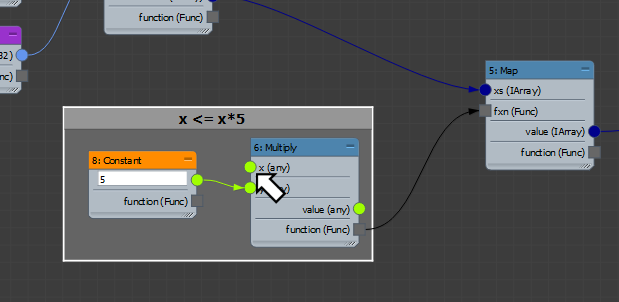The function output of an input or operator node treats the input node, or the operator node and all the graph to the left of it, as a function. Unconnected input nodes in that graph become the function's arguments.

The unconnected input—x (any)—becomes a function argument.
The order of the function arguments is determined by the order in which the unconnected connectors appear when traversing the graph using a depth-first traversal. In a depth-first traversal the child nodes are visited recursively in top-down order before the node itself is visited.
Function Types and "Arity"
A function's type is determined by the number of arguments, the type of the arguments, and the return type of the function. The number of arguments of a function is called the function arity. Functions with arity of 3 or less, have special names:
- Nullary function: arity 0
- Unary function: arity 1
- Binary function: arity 2
- Ternary function: arity 3
A function with a boolean return type and arity of zero or more is also called a predicate.